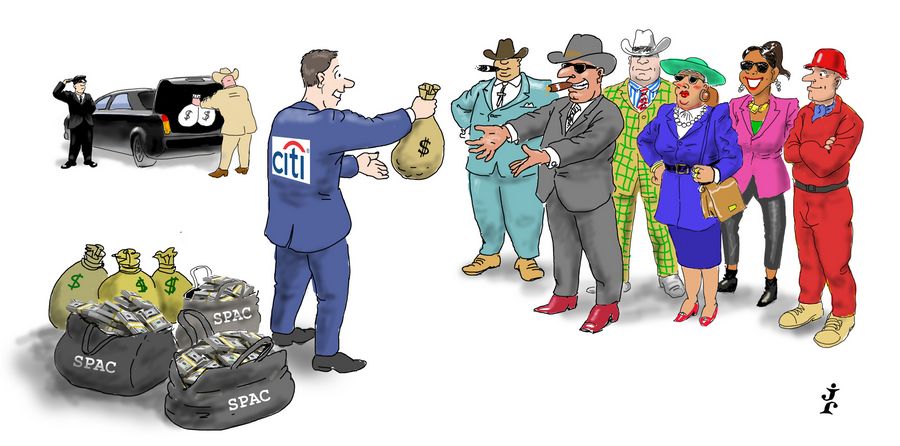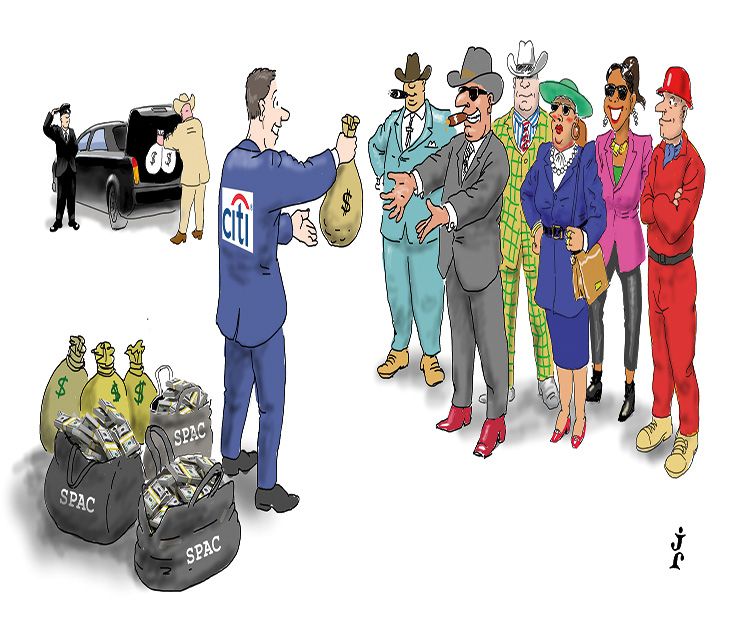An even spread
Equity capital markets across the Americas were marked by diverse investment opportunities in 2017. Yet, against a backdrop of soaring equity valuations, identifying areas of outperformance proved elusive. Citigroup, through a diverse banking platform, provided unexpected sources of alpha, and is IFR’s North America Equity House of the Year.
Citigroup capitalised on broader investor appetite for risk to present opportunities beyond traditional growth centres of tech and healthcare to a far broader cross-section of the economy.
“This is the first year in a long time where the capital markets have been constructive for every calendar month,” said Douglas Adams, who co-heads Americas ECM alongside Clayton Hale. “It’s also been across a greater breadth of industries than in the recent past.”
Combined equity issuance, both IPO and follow-on activity, climbed by 15.1% to US$174.6bn, with energy and power comprising 15.6% of overall volume, followed by real estate (13.6%), healthcare (13.6%) and financials (11.2%).
Citigroup’s US$14.9bn league table share, an 8.6% cut good for fifth in the league, breaks down as 16.5% energy, 12.9% real estate, 12% financials and 11.3% healthcare – a remarkably similar cross-section, according to Thomson Reuters data.
Medical equipment maker Becton Dickinson and its US$4.95bn equity-linked issue in April to help fund the acquisition of CR Bard was a marquee win. BD is IFR’s corporate issuer of the year.
Keane Group, an oil fracker backed by Cerberus Group, was a success that benefited from the decision to go public in January. The IPO was the first of 2017 and captured interest by offering exposure to growing US oil production through oil services, which remained attractively valued compared with E&P.
Citigroup, acting as lead-left and stabilisation agent, placed 26.8m shares in the base deal at US$19 each, the top of the US$17–$19 marketing range on a deal that was upsized twice – originally just 16.7m shares were on offer. Keane was 13 times oversubscribed, ensuring the greenshoe was exercised and proceeds reached US$585m, making it the largest oilfield services float since 2013.
Jagged Peak Energy, a Permian Basin-focused E&P, proved more challenging that same month. A drop in the price and cut in shares from the launch was a disappointment but still equated to US$45,000 per acre in the Delaware Basin, a massive premium to that paid by Exxon Mobil earlier the same month (US$23,500) and the average across the broader Permian (US$33,000).
Making SPACs great again
The bank truly differentiated itself leading special purpose acquisition company IPOs. While others have abandoned the product Citigroup refined the structure. Better quality sponsors, getting mutual funds to buy and giving the sponsor more control on acquisitions are changes that have helped in both raising money and putting it to work. The bank bookran 10 new vehicles for a bookrunner share of US$2bn, according to Thomson Reuters, which does not include SPACs in league tables.
CF Corp is a perfect example. The combination of former Blackstone partner Chinh Chu and Fidelity National Financial chairman William Foley gave acquisition and sector expertise that secured US$600m in May. Just after the IPO closed, the vehicle agreed to acquire Fidelity & Guaranty Life for US$1.835bn and shareholders approved the acquisition in August.
“The hardest part of the industrial IPO market [in 2017] was that the peers were trading at 20%–30% premiums to historic valuations. For packaging companies, people like to pay 7–8 times not 10 times, industrial companies 8–9 times, not 12,” said Americas ECM co-head Clayton Hale. “In marketing IPOs you have to make sure you’re positioning the business to trade at a sustainable multiple over time.”
This historic valuation anchor was attached to KKR-backed diversified industrial Gardner Denver in April, forcing it to accept a lowered valuation on its US$950m IPO. Ardagh Group, the highly-leveraged packaging company, and chemicals company Venator Materials, a spin-off of Huntsman International, faced similar resistance on their IPOs in March and April, respectively. Gardner Denver closed the year 45% above offer.
A bookrunner mandate on Athene, the Apollo-backed insurer and IFR’s Americas IPO of the year, was a significant win.
Roku, the video-streaming device maker, marked a key success within TMT. Ahead of the formal deal launch in September, Citigroup (one of two active bookrunners) tested the waters in an effort to educate investors on the potential of Roku as a platform to deliver advertising to a growing base of 15m active customers.
Broader public marketing – 50 one-on-one meetings and 260 investors overall – saw pricing at the top of the range and Roku soared to a 67% gain on its debut, the best-performing IPO in the consideration period. The greenshoe was exercised the same day, taking proceeds to US$252m.
Citigroup had advised the company against going public two years earlier.
“The company executed tremendously against the plan they laid out two years ago,” said Americas origination head John Chirico. “At the time, they were more a device company. Now they are as much an advertising platform as a device company.”
Citigroup more than held its own on the regular flow business – and avoided the pitfalls of a still-active block business it helped pioneer back in 2012.
To see the digital version of this review, please click here.
To purchase printed copies or a PDF of this review, please email gloria.balbastro@tr.com.


